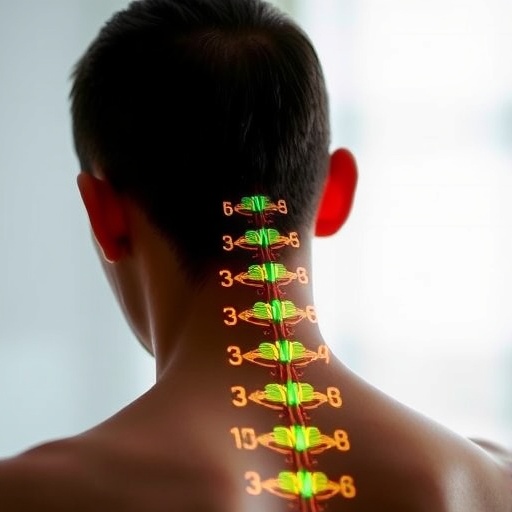In a groundbreaking study published in BMC Medical Education, researchers led by C.D. Johnson have undertaken a comprehensive content analysis regarding program standards and student competencies across various chiropractic accreditation agencies worldwide. The study seeks to shed light on how different accreditation bodies establish their educational criteria and how these standards impact the competencies of chiropractic students. This examination is particularly relevant in an era where global health standards are under constant scrutiny, emphasizing the need for uniformity in educational frameworks.
As chiropractic care gains recognition as an essential component of healthcare systems worldwide, the importance of aligned educational standards becomes even more critical. The study meticulously reviews existing literature and accreditation documents from several leading chiropractic institutions globally, aiming to provide insights into the intricacies of chiropractic education. The researchers believe that aligning educational standards can enhance the quality of chiropractic care and ultimately benefit patients.
This fascinating content analysis reveals significant disparities in the educational standards established by different accreditation agencies. While some agencies maintain rigorous academic requirements, others exhibit a more flexible approach, which can create uneven competencies among chiropractic graduates. By documenting these variations, the study offers a foundational understanding of how educational outputs might differ due to varying accreditation standards.
Moreover, the researchers found that many accreditation bodies do not adequately define the student competencies necessary for effective chiropractic practice. Competency frameworks are essential for educational institutions to cultivate graduates who are not only knowledgeable but also capable of applying their skills in clinical settings. The lack of clear competency guidelines may lead to a workforce that is ill-prepared to meet the diverse needs of patients.
The analysis further highlights the necessity for ongoing dialogue among chiropractic education stakeholders, including academic institutions, professional associations, and accreditation bodies. Collaborating to create cohesive standards could facilitate a more standardized approach to chiropractic education, thereby enhancing the professional relevance of graduates. With rapid evolution in healthcare practices, it’s crucial for educational programs to adapt quickly while maintaining high standards.
Johnson’s study also points toward the international efforts in unifying chiropractic education. Global health organizations advocate for consistent training specifications to ensure that practitioners are equipped to address varied patient conditions effectively. These recommendations aim not just at elevating the chiropractic profession but also at enhancing the overall quality of patient care across borders.
Furthermore, the study discusses the implications of educational inconsistency for public perceptions of chiropractic care. When prospective patients are faced with disparate levels of practitioner education, it can lead to confusion or misgivings about the efficacy of chiropractic treatments. This risk underscores the importance of establishing uniform standards that can augment the profession’s credibility and trust among the public.
Financial implications of varied educational standards are also examined. Discrepancies in training can affect the employability of chiropractic graduates across different regions and may necessitate supplementary training for those seeking to practice in jurisdictions with stricter educational guidelines. This not only raises concerns for students regarding the cost and time investment in their education but also has ramifications for the healthcare labor market.
As the research progresses, the authors express optimism about the future of chiropractic education. The study serves as a call to action for accreditation agencies to reconsider and potentially revise their standards to ensure that they uphold the competencies necessary for effective practice. With further collaboration and commitment to high standards, the chiropractic field can foster an environment of continuous improvement that benefits both practitioners and patients alike.
The harmonization of chiropractic education standards may also enhance international mobility for healthcare practitioners. As globalization continues to shape various sectors, including healthcare, practitioners will need to be sufficiently educated to navigate different health systems and practices. A robust framework for chiropractic education could ease transitions for graduates seeking opportunities abroad, ensuring their skills are recognized and valued globally.
In conclusion, Johnson and colleagues’ research substantially contributes to the ongoing discourse regarding chiropractic education and accreditation. By advocating for consistent standards across global chiropractic education, the study aligns with broader efforts to elevate the profession and enhance patient care experiences. As these conversations progress, they hold the potential to reshape not only chiropractic education but also the health landscapes in which chiropractors operate.
Continued research and dialogue are essential to bridge the gaps identified in this study. The outcomes may very well influence how future generations of chiropractors are trained, potentially leading to more effective practices that adapt to patients’ needs. It is a critical time for the profession, as advancements in education correspond with evolving health paradigms. J.D. Johnson’s work stands as a transformative reference for academia and practitioners dedicated to the common goal of improving healthcare delivery through informed practices.
This diligent analysis underscores the importance of educational alignment in a field that significantly impacts patient well-being. As chiropractic standards evolve, so too will the capabilities of practitioners who are equipped to meet contemporary health challenges, ultimately fulfilling the foundational ideals that underpin healthcare.
Subject of Research: The impact of chiropractic accreditation standards on student competencies.
Article Title: Program standards and student competencies among global chiropractic accreditation agencies: a content analysis.
Article References: Johnson, C.D., Green, B.N., Amorin-Woods, L. et al. Program standards and student competencies among global chiropractic accreditation agencies: a content analysis. BMC Med Educ 25, 1473 (2025). https://doi.org/10.1186/s12909-025-08052-3
Image Credits: AI Generated
DOI:
Keywords: Chiropractic education, accreditation standards, global health, student competencies, healthcare delivery.




